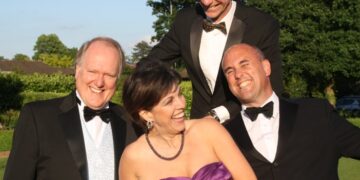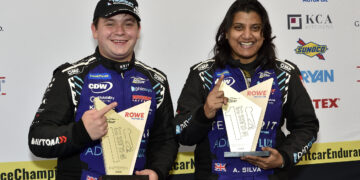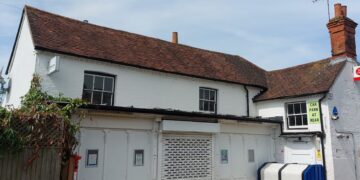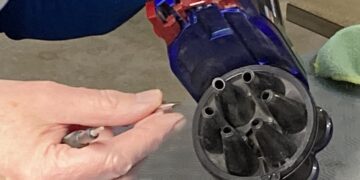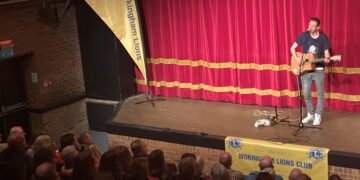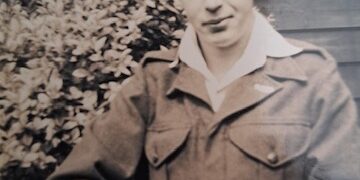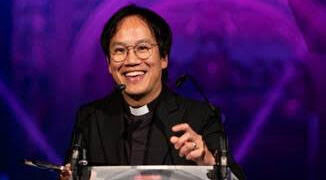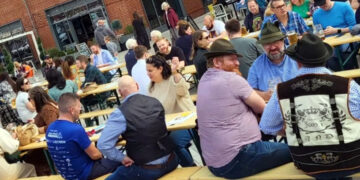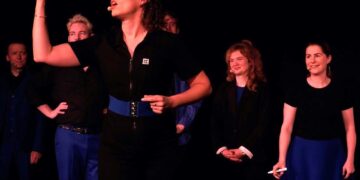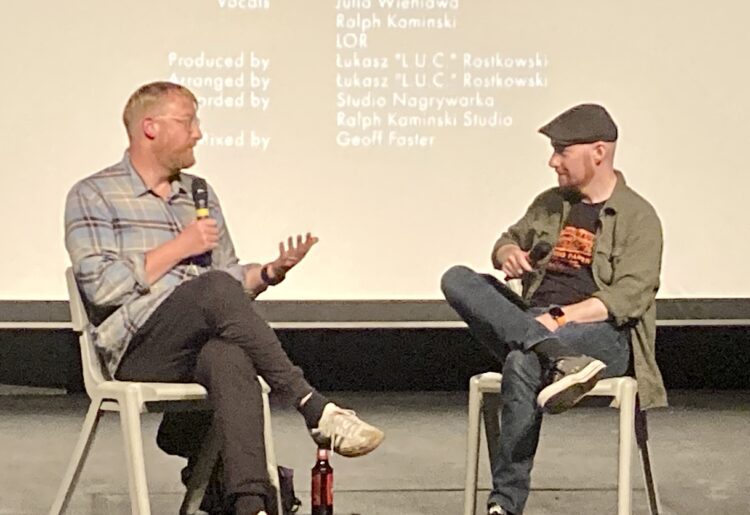HUGH and DK Welchman’s animated film The Peasants (2023) was a sensation in Poland.
It enjoyed 1.9 million admissions, and was a teenage craze, with many seeing it six or seven times dressed in traditional costumes.
Every one of its 40,000 frames was painted in oils by artists, giving it a unique and vivid on-screen style.
Members of Wokingham Film Society were fortunate to see the film at the Whitty Theatre, followed by a Q&A session with film director Hugh, who comes originally from Bracknell.
Based on a 1909 novel by Polish author Władysław Reymont, the film describes the customs, rhythms and behaviour of a Polish village community as the year progresses.
It tells the story of a beautiful young woman, Jagna, who finds herself desired by the village’s richest farmer, his eldest son, and other men in the community.
Trapped by village pride, patriarchy, and family feuds, she tries to negotiate a path to happiness, but is furiously rejected by her community.
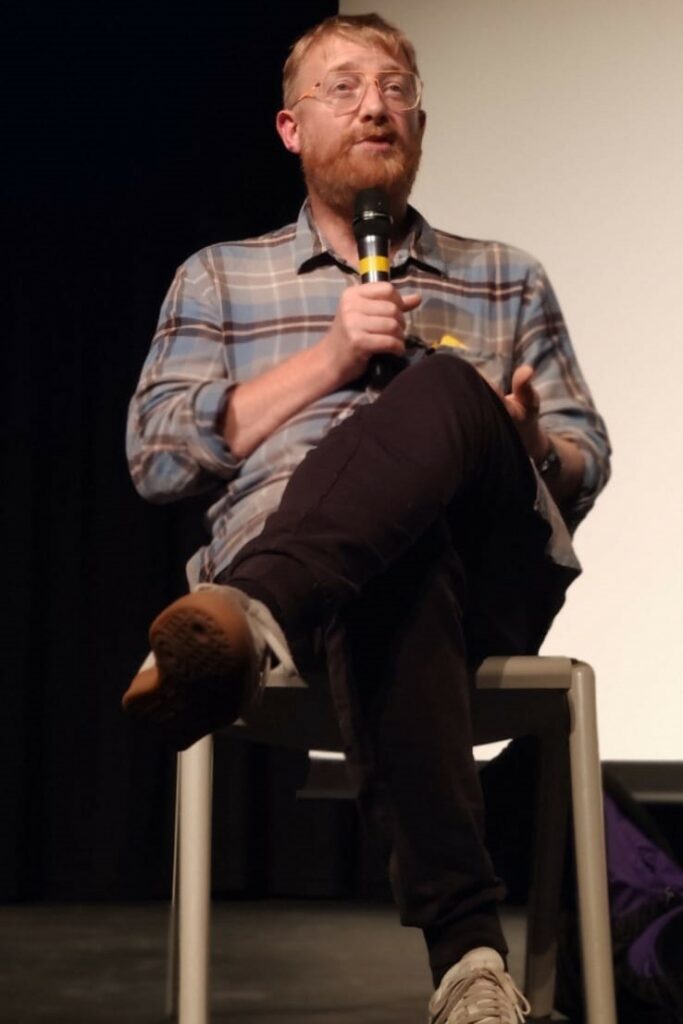
“My wife DK had read the novel at school, when she was 16,” said Hugh.
“She loved the story, and identified with Jagna, who she felt was treated very unfairly.
“We had already made an oil painted animated film together (the award winning Loving Vincent, 2017), and DK wanted us to make another like it, based on The Peasants.
“When I read the book, I felt exactly the same – it contains wonderful poetry, the descriptions of seasons are beautiful, like someone describing an oil painting.”
Hugh and DK wrote the script and directed the live action together.
DK, an accomplished artist in her own right, took charge of the painting animation, while Hugh took on visual effects, sound and music.
“The story is filled with passion and anger, so it needed a new kind of camera approach, pulling in closer to the emotions, and the painting style needed to be much more dynamic,” Hugh explained.
“It’s Hardy-esque, so the images that come into your head are from the Realist, Pleine Air, and Pre-Raphaelite movements of the late 19th Century.
“Oil painting seemed very appropriate for the film, being the medium of the time.”
The results are captivating, both visually and musically.
And the film’s neo-traditional soundtrack was possibly even more successful than the film itself in Poland.
“The music developed a life of its own, and the soundtrack went platinum in three months,” he said.
“Teens were making Tiktok videos of themselves jumping up and down to our end credits.”

Making a film is not an easy process, choosing to hand paint every frame makes it harder, but shooting a film during a pandemic and a war, when your studios are closed down and your artists have to flee their country is almost impossible.
The Peasants was beset by huge problems, and despite being beaten in cinemas only by Barbie and Oppenheimer, has made a loss.
“Our artists were working in Poland, Lithuania, Serbia and Ukraine,” Hugh said.
“It took several months to set up our art studio in Kiev, and we’d been open for just a month when the war started in Ukraine.”
The group’s studios were also shut down twice for extended periods during the pandemic.
“Men weren’t allowed out of Ukraine, so it was mainly women artists that came to work on the film, bringing with them their suitcases, their children, and sometimes even their parents.
“We had to help them establish lives abroad.”
Rising costs almost destroyed the project.
“We thought it would fold,” said Hugh.
“We had 250 employees, a quarter of whom were refugees, and we didn’t want to fail them, but we kept having power failures, and we didn’t even have the money to buy a generator for our Kiev studio.
“We ended up selling paintings from the Loving Vincent film to finance one.”
Scenes are mainly shot in the studio, with actors in full costume, hair and make-up.
But the sets are all cardboard.

“Our artists create the background,” he explained.
Even outdoor scenes are shot in front of a green screen so the artists can fill in the landscape.
Small characters and animals are then animated digitally, and the very slow process of painting 40,000 frames begins.
Artists sit in three by two metre booths, with a large canvas, an image to copy, and a camera recording each finished picture.
The film requires six frames per second, each of which changes slightly as the actors move.
Once a picture is filmed, the artist rubs out parts of the first frame to paint in the tiny alterations that will appear as fluid motion when played at speed.
“The first in a series often takes three or four days to complete,” Hugh said.
“The ones that follow take around half a day each.”
Iron discipline keeps all the painters working to the same style and colour palette.
A supervisor in each studio makes sure artists keep to the colour scheme and brief.
“These are exceptional painters,” Hugh said.
“They can look at a colour and know immediately how to mix it.”
Because of the process of rubbing out, only the final version of each frame remains at the end of the process, around 1,200 pictures.
Had the group been able to stick to their original budget it would have made a profit, but the pandemic and the war made that impossible, and despite its sell-out success the £6.5 million project has made a loss.
To balance finances the film’s original paintings can be purchased for between 250 and 2,000 euros each.
Hugh’s next project is an animated film adaptation of Shakespeare’s Midsummer Night’s Dream, which he will be directing with John Caird, of RSC, Les Miserables, and Spirited away fame.
“We’ll be incorporating painted skies, a magical forest from miniatures, and live action from actors,” he said.
DK, meanwhile, will be re-writing one of Hugh’s scripts, a story set in Africa 140,000 years ago, to be animated in a cave painting style.

To find out more about the couple’s films,visit: www.thepeasantsmovie.com
For information about Wokingham Film Society, log onto: www.wokinghamfilmsociety.com


